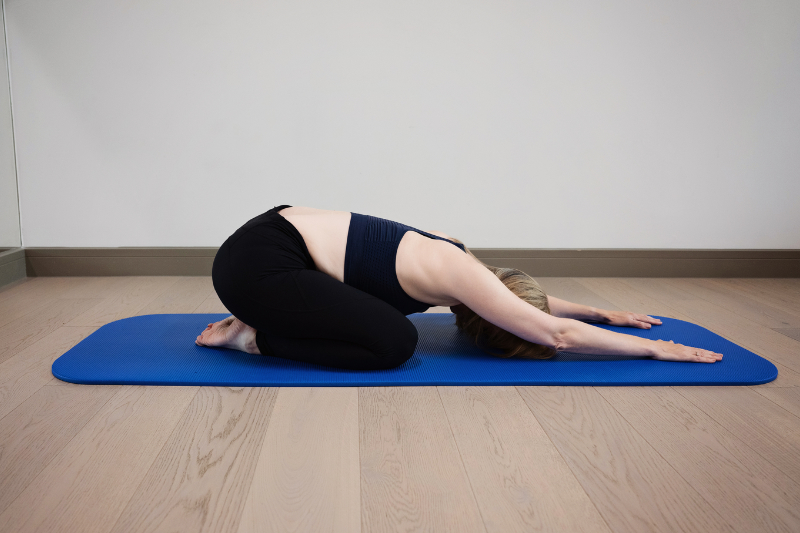by Jeannie Di Bon, February 7th, 2024

Fascia is connected to the way we live and move in the world. It tenses up when we feel threatened, loosens when we’re happy and at ease, and it’s responsible for sensations like prickling at the back of your neck. It also has an elastic quality, contracting and expanding, and stores and releases the kinetic energy from our body’s movement.
What is Fascia?
The fascial system surrounds, interweaves between, and interpenetrates all organs, muscles, bones, and nerve fibers, endowing the body with structure and providing an environment that enables all body systems to operate in an interconnected manner (Schleip et al, 2019)
I like to think of this three-dimensional sheet of connective tissue like clingfilm – wrapping around, separating different layers, and protecting various tissues in the body. At the cellular level, fascia is extracellular matrix (ECM) and some cells, mainly fibroblasts. The ECM consists of fibers – mainly collagen (types I, II, and III are found in the connective tissue) Dr. Cortney Gensemer does a great job of explaining this here: What is collagen and why is it so important?

photo by Julian Baker
The ECM is also wet. It is a gel – made of both fiber and fluid. The ECM is full of fluid, allowing the fascial fibers to slide. This interstitial fluid volume is estimated to be three times that of the combined volume of cardiovascular and lymphatic systems (source: nature.com).
Fascia is the biggest sensory organ in the body (source: frontiersin.org) – which is why I believe building sensory awareness in our bodies is crucial to healthy movement. It helps prevent or minimise stress on a local muscle and protects the whole body’s integrity.
What do we know about Fascia and hEDS?
Myofascial pain can correlate with aggregation of ECM and a corresponding increased thickness of deep tissue which alters gliding between layers of fascia (Source: edinfrance.org). Prior to this study, this hadn’t been characterised in the context of Ehlers-Danlos Syndrome. While this is a preliminary study with a small sample size, researchers determined hEDS patients exhibit increased deep fascia thickness compared to non-hEDS controls – “These changes in the deep fascia, muscle, and tendons of hEDS patients may be associated with alteration in gliding properties leading to pain, joint instability, and dysfunction.”
Another small study used ultrasonography to measure fascial gliding in the iliotibial tract in response to foot plantar and dorsiflexion. They found a decrease in movement compared to controls. “This study shows that inter-fascial gliding may also be impaired and may correlate with the high prevalence of knee pathology”
While the impact of hEDS on fascia has not been extensively studied, there does seem to be an interaction. Dr. Helene M. Langevin, the director of the National Center for Complementary and Integrative Health branch of the NIH, recently said: “Learning how to move safely can be particularly challenging for people with Ehlers-Danlos syndrome/hypermobility spectrum disorder, whose fascia can be generally “loose,” but also “tight” in some parts of the body that have been previously injured.”
Movement Strategies to Keep Your Hypermobile Fascia Happy
My top tips:
- Don’t force it: If I’m forcing or pushing my body whilst exercising or moving, my fascia is going to respond by getting tighter and tenser. Listening to your body and adopting a ‘no pain, no strain’ approach is what will allow your fascia to move freely and not tighten.
- Relax your mind: Your fascia also responds to your mental as well as physical approach. If we can relax our busy minds and release the fear of movement then the fascia will help allow for that movement. Moving with awareness and care is what will give you greater mental and physical freedom.
- Keep moving: Not forcing your body doesn’t mean to stop moving altogether – in fact, this can lead to dehydration of the fascia and stiffness which in turn will create more pain. Instead, focus on gentle, rolling actions as small and regular movements of the body are what will help keep your fascia elastic. Breathing awareness and proper breathing techniques are key to unlocking this positive type of movement.
- Be patient: The fitness industry might try to suggest that tension in the fascia is something that can be ‘released’ with the right steps, big stretches, or foam rolling, but reducing tightness is a long-term process, not the work of an instant. Gentle exercise is what will hydrate the fascia with movement, increasing its health and, in the long term allowing you to do more.
Want to learn more about fascia?
We will be joined by Ana Barretxeguren of Moving Fascia for our Members Meet-Up on February 21, 2024. The presentation will be saved in the Resource Center of the app.
Try some fascia-friendly movement with The Zebra Club. All classes are created with fascia in mind, but to learn more check out this class and try some fascial self-massage with the Fascial Release Class.
Fabulous Fascia – Connecting The Dots with Julian Baker
YouTube Fascia Class – Including a discussion and movement practice
2 Comments
Cristina Sabbadin - 20th March 2024
Thank you Jeannie for this blog post! I am a physical therapist working with hEDS and HSD and I cant keep track anymore of how many times a patient comes to me asking for a “manual release” of their fascia — with intense manual work.
Thank you for explaining the importance of regular movement with emphasis on being patient when addressing these sorts of things.
Jeannie Di Bon - 21st March 2024
Thank you – I’m so glad this was helpful.